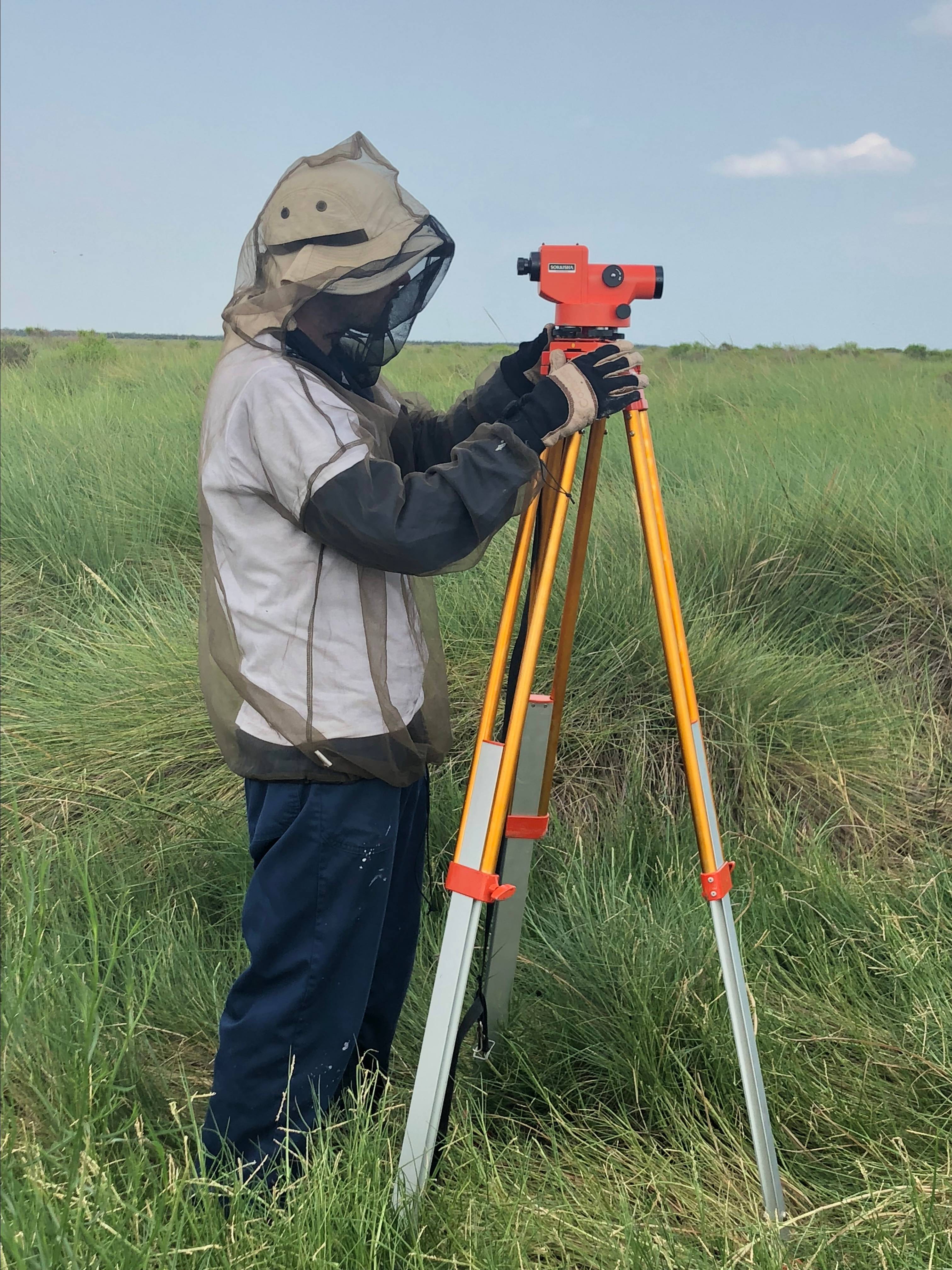Student leads award-winning research on Hurricane Ike’s impact on the Texas Gulf Coast
Lauren Hartung | November 25, 2019

Doctoral candidate Joshua Hodge has spent the last three years researching how hurricane storm surge sediment deposits from Hurricane Ike have impacted the coastal marshes on McFaddin National Wildlife Refuge along the Texas Gulf Coast. A hurricane storm surge sediment deposit is predominantly a sand-rich layer deposited by the storm surge. The storm surge is a rise of sea level generated by a strong cyclonic storm, above predicted astronomical tides. Hurricanes are the main cause of storm surges because of the combination of their very low pressures and high winds.
Hodge found that hurricane storm surge sedimentation raises the elevation of Texas coastal marshes, which is beneficial. The sediment contributed from hurricane activity is important as it helps these fragile environments keep pace with sea-level rise. These marshes are host to a variety of flora and fauna, sequester excess carbon from the atmosphere, and serve as a barrier to more populated inland locations by absorbing the brunt of flooding from storm surges and heavy rains.
Hodge conducted his fieldwork over several trips to the coast in 2017 and 2018; completing the fieldwork in August 2018. He was assisted by an undergraduate field assistant, Stephen Taylor.
“I dug shallow pits to assess the sediment deposit from the storm surge of Hurricane Ike on four coastal marsh transects on McFaddin National Wildlife Refuge,” said Hodge. “I measured how far inland (from the coastline) each pit was, its elevation, and how far it was from where Hurricane Ike made landfall. The observational results, along with quantitative analysis, will be used to model the impacts of future storms on coastal marshes.”

Along with his telescopic lens and stadia rod, he needed other critical research equipment for the rugged conditions of the coastal marshes: several mesh mosquito suits, snake-proof boots, an all-terrain vehicle, and plenty of concentration to stay on the lookout for any prowling alligators, snakes, feral pigs, and lightning from air mass thunderstorms associated with the sea breeze convergence.
The primary goal of Hodge’s study was to discover spatial variations in storm surge sedimentation in a geographic region impacted by Hurricane Ike. Hodge hopes his research will serve as useful guidance in marsh preservation, and discourage the construction of sea walls or levees that would prevent hurricane storm surge sedimentation from depositing sediment onto coastal marshes.
“With climate change induced sea-level rise inundating coastal marshes around the world, my dissertation research and studies following it should serve as useful guidance to coastal management agencies trying to combat the rapid conversion of these marshes to open ocean,” said Hodge.
Hodge presented his research at the Southwest Division of the American Association of Geographers (SWAAG) Meeting, October 10-11. His presentation, entitled “Hurricane Storm Surge Sedimentation on East Texas Gulf Coast Marshes: Spatial Variations in Sediment Distribution in the Right-Front Quadrant of Hurricane Ike” won second place in the Graduate Student Paper Competition.
Share this article
For more information, contact University Communications:Jayme Blaschke, 512-245-2555 Sandy Pantlik, 512-245-2922 |